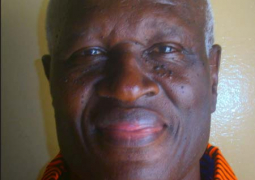Introduction:
In “Instant Success Ten Keys to Personal Achievement” Momodou Sabally seeks to unleash the beast of success supposedly within any person willing to take the journey his book takes its readers through. The book of seventy-two (72) pages holds a formula for success in ten (10) chapters starting with the first step – “Be Yourself” – to the final step – “Be Coachable”. Within all ten chapters, the writer borrows words of inspiration from some of history’s most inspirational writers, philosophers and leaders whilst also finding truth in words of scripture to support his statements.
From historical greats like Napoleon Hill who seems to be one of Sabally’s most mentioned icons to local success stories like himself, he pens his words to cater to the needs of a new generation of leaders working for the success his book spells out. The book which is styled to be a simple, yet still research filled transcript follows a blueprint that lends ideas from sports successes to academic.
His chapters tell of simple oxymoronic ideas as can already be seen with his first and last chapters. In Chapter five (5), he asks his readers to have a strong desire for wealth, and in the following chapter, he further asks them to have faith. As contradictory as these two may seem, he goes further to clarify and clears all doubt. It is almost as if his, book starts off with widely accepted contradictions about success before later making readers see that our contradictions need not necessarily be stumbling blocks to success.
With serious biblical reference and the genius of simple math, his book tells its readers they can be ten times themselves. Not stopping there, he again lends from famous words of poetry and uses as reference one of the living legends of the black race – Dr. Ms. Maya Angelou. Using examples close to home, he drives his points home. Instant Success – Ten Keys to Personal Success is centered on DESIRE.
Background Information
Doing my review on the book, I could easily tell that the book targeted an audience of young to relatively older people (19 years – 45 years) knowing that the hunger for success is more evident in a generation with growing competitiveness and lesser competitive advantage. Comparing it to other books of its kind, I had to put criteria into perspective, from editorial requirements through the target audience, the intended purpose, to the effectiveness of the book in achieving its ultimate objective.
In the book, Sabally defines his purpose quite clearly – How to achieve Instant Success. He has gone further to identify key areas readers would have to focus on to improve our chances of achieving success e.g. patience, perseverance, desire e.t.c. His chapters are, on their own a clear blueprint of what the book entails in detail. Each Chapter borrows from where the previous one stops and as if to tell a story, grows slowly to an end-point that is well defined. There is no doubt that there is a direct purpose for his work – “Do not worship complexity” – to use his own words.
His examples were also very fitting and gave credibility to his points. Using the words of those that have defined success for previous and present generations, he gives weight to his words to assure readers of the strength of his beliefs as per success and the route to it. Being his third book, there is no doubt in the strength of his pen as a writer. This book reveals that as our writer has risen through the ranks of national service after a journey that bore its roots from his education as seen in his first book “Jangi Jollof”, his present position as director of budget is in itself a story of success and one worth learning from.
Sabally allows his formula to grow with tenacity and without restraint. His attempts grow forceful as he plays with the grammar and style as simple as it may seem to the passing eye. In Chapter four (4) he lends from personal experience by using the example of his mother. This part of the book justifies a sure truth to his success formula. It shows a path of “working and waiting” initiated by someone before him and then passed on to the man he is today.
Chapter 4: page 29; paragraph 2
“Yaboye knows not hours and minutes when it comes to work. She works and keeps on working. As long as there’s something to do, my mom is always at it”
As this is his third book, Sabally does not re-do an introduction of “the man” but grows from his previous two to delve further into the mind of the author. He caters to an audience that is rooted in tradition and religion and does not deny that fact. As liberal as most of his words are in the book, he ensures that they are inter-woven with famous words of scripture whilst also ensuring that he caters to the needs of the Christian population or Biblical intellectuals which could easily make up at least twenty percent of his reading population.
Chapter 6: page 38
“If thou canst believe, all things are possible to him that believeth”- Mark 9:23
Finally, knowing that this is a generation that lives and breathes sports, he uses to his satisfaction, the example of sports success stories within The Gambia and the wider world.
Chapter 6: page 38; paragraph 4
“But despite these odds, this little known team played in
Furthermore, in his letter to his son Muhammad Sabally, he uses sports icons Zinedine Zidane and Michael Jordan to inspire him to the gates of success.
There was however a bit too much modesty in the writer’s words. His is a position worthy of an icon and role model for many young people. His story of rise to prominence would have added another dimension to the book. This for me was the one absent bit from the book as I had hoped to hear a little bit about his current position as the national budget director and his journey of success to it, but I suspect he is saving that for a future book. As mentioned earlier however, readers will surely find personal reference within the lines of the book but a mind as greedy as mine would definitely want some more of it.
His Chapters are all well established and explained, and each of them with added consistency build on principles of desire, hard work, diligence and more. In Chapter five (5) however, where he asks his readers to develop a strong desire for wealth, he successfully distinguishes wealth from money but then goes on to focus on what he calls “the universal yardstick for the measurement of tangible wealth” – money. As much as I believe readers will be more appreciative of this approach, my judgment is that, they would also like to know about other forms of attainable wealth as earlier mentioned in the chapter. Upon close observation, many readers will find these secrets in his other chapters, but as most of his book gives a direct approach to answering most of our possible questions, giving little more emphasis to the other “riches of life” would have done a wealth of good.
The book is a solid reference for success and thus achieves its purpose. At times of doubt and frustration, it quells thoughts of frustration and inspires innovation and relentless effort. It gives a guarantee to success that many inspirational writers are too afraid to mention. The book gives valuable suggestions to tackle problems like procrastination, impatience and hesitancy. It does not only identify these problems but gives the readers practical ways of ensuring that they do not become hindrances to success.
Reading through the lines, one can easily find oneself lost in them as they seem directed at the reader. The issues it tries to tackle are common problems among this generation of pushers and changers. For a society as laid back as ours, the book will definitely talk to anyone that lays his/her hands on it. I started reading it in a public vehicle and another passenger asked to take a look at it. The expression on his face and his reluctance to return it spoke enough of how fitting it is for our society and our current stage of development.
The grammar and context is one that is simplified enough for any educated person to read and understand. Still, Sabally has – deliberately or not – adding a rich vocabulary that will definitely enhance the reading quality of any attentive reader. He further ensures that humor and wit is not absent in sending across his message.
Finally, Instant Success: Ten Keys to Personal Achievement is a timely book for all. As success is one of the most talked about issues in this generation considering the challenges of an economically unstable world, reading the book gave me much needed insight and inspiration and I believe other readers will be just as satisfied and hungry for his next book (which I secretly pray gives us secrets of his journey to here and now).
“Instant Success: Ten Keys to Personal Achievement is a blueprint to every man/woman’s success blueprint” – Latirr Carr/Balafong



